Project scope statement examples: Working on any project would be easy with a project scope statement. Project managers need essential tools such as written confirmation of what results your team will have. Through the statement, you will also be able to discern what constraints and predictions your work will be.
A project scope should be agreed upon by both parties working on it and those who ordered it. The leader and all team members should have mutual understanding and commitment to produce specific results. Let’s learn more about it!
What is a Project Scope Statement?
Every project has a big dream behind it. This dream is written down in a special paper called a project scope statement. It’s like a list of things the team wants to do and how they plan to do them.
Essential Elements of Project Scope Statement
A good project scope statement will have the following elements.
Justification
A short explanation about the aims of your project should achieve regarding the business need. Since this is only an introduction, more details, and clearer explanations will be on the project charter.
Product Scope Depiction
It is where you should write about all characteristics of your project results, whether it’s a product or service. The characteristics should meet what your customer needs. All members of the team should grasp this section.
Deliverables
The results project you want to produce, whether it is services or physical products. All objectives or deliverables should support the expected characteristics from the results.
Requirement Specifications
Your project results should have specific criteria so that all deliverables can be accepted. Usually, this section of the project scope template would be described in a technical method so all project members can implement it.
Issues and Risks
Some conditions or situations that will hinder you from achieving the goals. It will affect how much resources you need, the results, the time, and how you want to achieve it. Those conditions should be predicted before you start the project.
Project Exclusions
It is a limitation of what your project won’t produce. You must create this limitation so your project won’t take longer, as it may go another way. This section of the project scope statement is important to clarify your scope, which may include disclaimers and decisions about the project.
Assumptions
Description of what you will do when you find unclear information during your project, whether it is when you prepare, arrange a plan, and conduct the project. Establishing assumptions before you begin to work on the project will help you start discussions among the stakeholders.
Review Section and Approval
The last section on your project scope statement. It is where the stakeholders can review and eventually approve the project by giving their sign. However, some organizations with less formality could convey the approval verbally. The agreement on this document will permit you to start working on the project.
Tips for Writing a Great Project Scope Statement Example
Creating robust project scope statement examples is the foundation for a successful project.
Using the SMART (Specific, Measurable, Achievable, Realistic, Timely) criteria can immensely aid in drafting a comprehensive scope statement. Let’s delve into each of these criteria:
Specific
What it means: Your project scope statement should be clear and unambiguous. Avoid vague language and ensure that every detail is precise.
Tips for Implementation:
- Use clear and concise language.
- Detail what the project will and will not cover.
- Clearly define all deliverables.
- Avoid using jargon or terms that might be unfamiliar to stakeholders.
Example: Instead of saying, “We’ll improve website speed,” specify, “We aim to reduce the website’s loading time by 50%.”
Measurable
What it means: Every element of your project scope should be quantifiable. It allows you to track progress and ensures accountability.
Tips for Implementation:
- Set clear metrics or KPIs (Key Performance Indicators) for each deliverable.
- Define what success looks like for each phase of the project.
- Use tools and software to track progress.
Example: Rather than stating, “We’ll increase website traffic,” you can specify, “We aim to increase website traffic by 25% over the next six months.”
Achievable
What it means: Your project’s goals and deliverables should be attainable given the available resources, time, and budget.
Tips for Implementation:
- Ensure you have the necessary resources (human, technical, financial) to achieve your goals.
- Avoid over-promising. Set expectations that align with what you can realistically deliver.
- Regularly review the project’s progress to ensure goals remain achievable.
Example: If you have a limited budget and a small team, focus on updating critical sections over two months instead of aiming for a complete website overhaul in one month.
Realistic
What it means: The objectives in your project scope should be practical and relevant to the project’s overall goal.
Tips for Implementation:
- Consider potential obstacles and risks that might impact the project.
- Ensure your team has the necessary skills and expertise to achieve objectives.
- Frequently consult with stakeholders to ensure the project remains aligned with its goals.
Example: To improve user engagement on a website, focus on realistic objectives like revamping the user interface or improving content quality rather than adding unnecessary features.
Timely
What it means: Every aspect of your project should have a clear timeline, ensuring it remains on track.
Tips for Implementation:
- Set clear deadlines for each phase or deliverable.
- Regularly review the project timeline and adjust as necessary.
- Ensure that stakeholders are aware of and agree with the project’s timeline.
Example: Instead of saying, “We’ll launch a new marketing campaign,” specify by stating, “We will launch the new marketing campaign by the end of Q2.”
How to Write a Project Scope Statement
Crafting a comprehensive project scope statement is crucial for the success of any project. Here’s a step-by-step guide to help you write an effective project scope statement:
- Introduction
- Purpose: Begin by defining the purpose of the project. What is the primary goal or problem the project aims to address?
- Scope Overview: Briefly describe what the project scope statement will cover.
- Project Justification
- Business Case: Describe the business need or opportunity that the project addresses.
Example: “The current company website is outdated, leading to decreased user engagement. A redesign will improve user experience, potentially increasing sales by 20%.”
- Project Deliverables
- Specific Outcomes: List and describe the tangible or intangible items or results that will be delivered upon the project’s completion.
Example: “Deliverables will include a responsive website design, an integrated e-commerce platform, and a user feedback system.”
- Scope Inclusions and Exclusions
- Inclusions: Detail the activities, processes, and tasks that will be included in the project.
- Exclusions: Equally important, specify what will NOT be included in the project to set clear boundaries.
Example: “Inclusions: User interface design, content creation, and beta testing. Exclusions: Logo redesign, mobile app development.”
- Project Constraints
- Time, Budget, and Resources: Outline any limitations related to deadlines, available budget, or resources.
Example: “The project must be completed within six months with a budget not exceeding $50,000.”
- Project Assumptions
- List Assumptions: Detail any assumptions being made during the planning phase. Assumptions are factors considered as true in the absence of concrete evidence.
Example: “We assume that no additional funding will be provided and that all team members will be available for the project’s duration.”
- Requirements
- Specific Criteria: Describe the criteria that must be met for the project to succeed.
- Risks
- Potential Challenges: Identify challenges, obstacles, or risks that might affect the project’s success.
- Stakeholder Approval
- Review and Sign-off: Conclude your scope statement with a section for stakeholders to review and sign off on the document, confirming their agreement.
Example: “This project scope statement has been reviewed and approved by [Stakeholder Name] on [Date].”
- Revisions and Updates (if necessary)
- Document Changes: If there are changes or updates to the project scope after initial approval, document them clearly to maintain transparency.
Example: “Revision 1.1: Budget increased to $55,000 due to added e-commerce features.”
Why Do We Need a Project Scope Statement?
Working on a project can be like a puzzle. A Project Scope Statement is like the picture on the puzzle box. It helps everyone see what the finished project should look like. Here’s why it’s super helpful:
- It’s Like a Map:
The Project Scope Statement shows the way. It tells everyone what the project will do and what it won’t. It helps the team stay on the right path.
- No Surprises:
Sometimes, people need clarification about what a project is all about. The scope statement makes sure everyone knows the plan. This way, there are no unexpected problems or mix-ups.
- Helps Use Resources Right:
Projects need things like time, people, and money. The scope statement helps managers use these things wisely. It makes sure nothing goes to waste.
- Keeps the Project On-Track:
Sometimes, new ideas pop up in the middle of a project. The scope statement helps the team stay focused and not add too much extra stuff. It is called avoiding “scope creep.”
- Check the Project’s Progress:
The scope statement is like a checklist. The team can look at it to see if doing everything right and on time.
- Helps Make Choices:
Sometimes, the team has to decide how to do something. The scope statement helps choose the best way to fit the project’s goals.
- Gives Everyone Confidence:
When people see a clear Project Scope Statement, they feel good. They know the project is organized and has a good plan.
- Plans for Problems:
Every project might have some bumps along the way. The scope statement lists possible problems and ways to solve them. This way, the team is ready for anything.
- Makes Changes Easier:
Things can change, and that’s okay. If the project needs some tweaks, the scope statement helps the team see how to make them right.
When Do You Need the Project Scope Statement?
A Project Scope Statement is a map of projects. Here’s when you need it:
- Starting a New Project:
Just like you’d pack a bag before a trip, you’d make a Project Scope Statement before starting a project. It tells everyone what the journey will look like.
- Talking to Your Team:
If you want your team to know what they should be working on, show them the Project Scope Statement. It’s like a checklist of tasks they need to finish.
- Meeting with Stakeholders:
Imagine telling a story to your friends. You’d want to make sure everyone understands the same story. The Project Scope Statement does that. Talking to stakeholders (the people who care about the project) helps everyone agree on what the project will do.
- Checking Your Progress:
Sometimes, you should see how much of the project is done. The Project Scope Statement can help you see how far you’ve come and how much more you need to do.
- Making Changes:
Plans can change. If something new comes up or you need to change a part of the project, the Project Scope Statement can be your guide. It helps you decide if the change fits the project.
- Ending the Project:
You can look at the Project Scope Statement when you think the project is done. It will help you see if you did everything you planned to do.
Who Should Create and Approve the Project Scope Statement?
Making a Project Scope Statement is like putting together a team game plan. Let’s see who’s involved:
- Who Creates It?
- Project Manager: This person is like the team captain. They’re in charge of the project, so they usually write the main parts of the Project Scope Statement.
- Project Team: These are the players on the team. They help the project manager by giving ideas and details because they know much about the project’s needs.
- Stakeholders: These people care about the project, like sports team fans. They might have asked for the project, so they share what they hope it will achieve.
- Who Approves It?
- Stakeholders: Before the project starts, stakeholders must check the Project Scope Statement. They make sure it matches what they want. If it does, they give it a thumbs-up or a signature.
- Project Sponsor: This is like the team coach. They’re often the one who provides the money or resources for the project. They’ll check the statement to ensure it’s good for the project’s goals.
- Project Manager: After everyone’s ideas are in the statement and the stakeholders have checked it, the project manager gives the final okay. They’re making sure the plan is something the team can achieve.
Creating and approving the Project Scope Statement is a team effort. Everyone works together, like in a relay race, to ensure the project has the best plan to succeed!
Project Scope Statement Examples
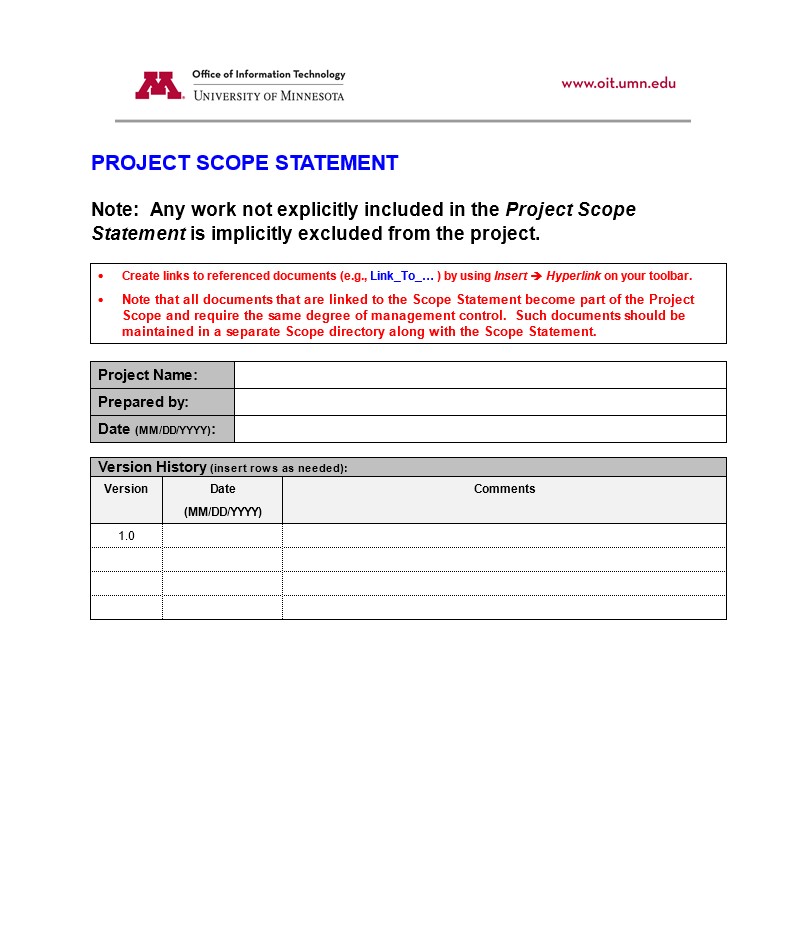
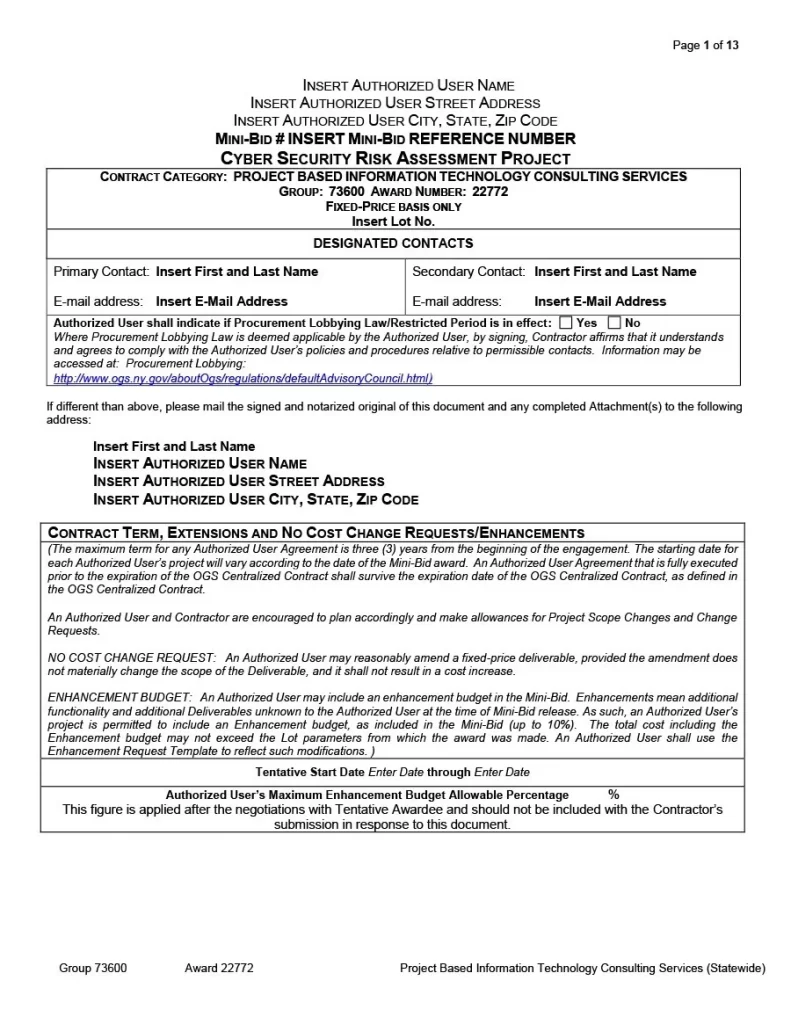
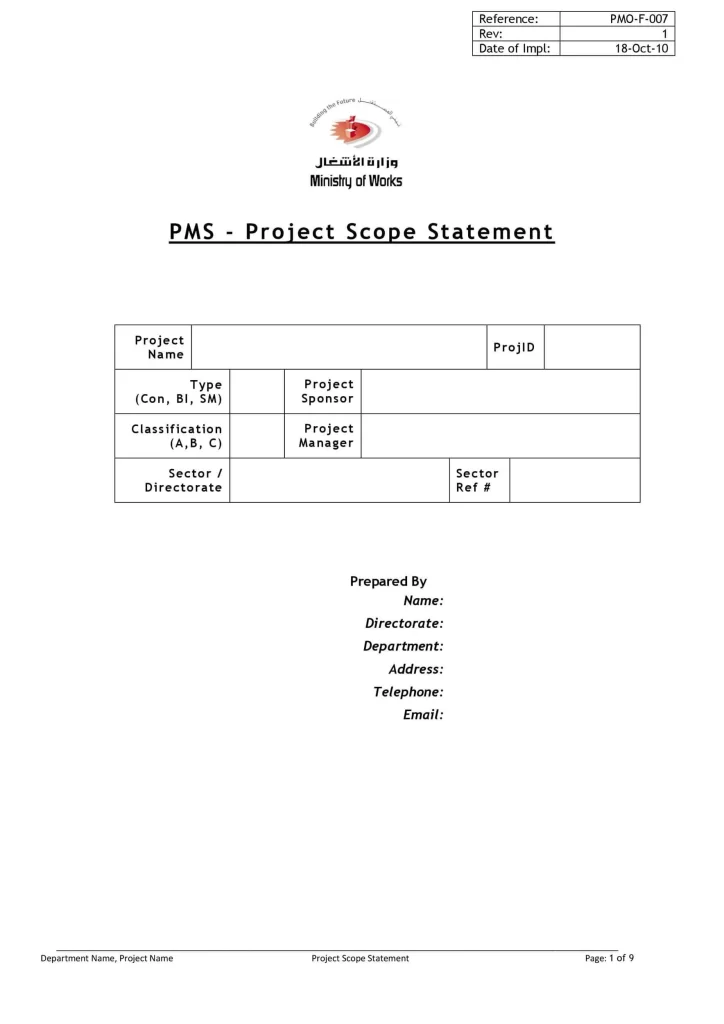
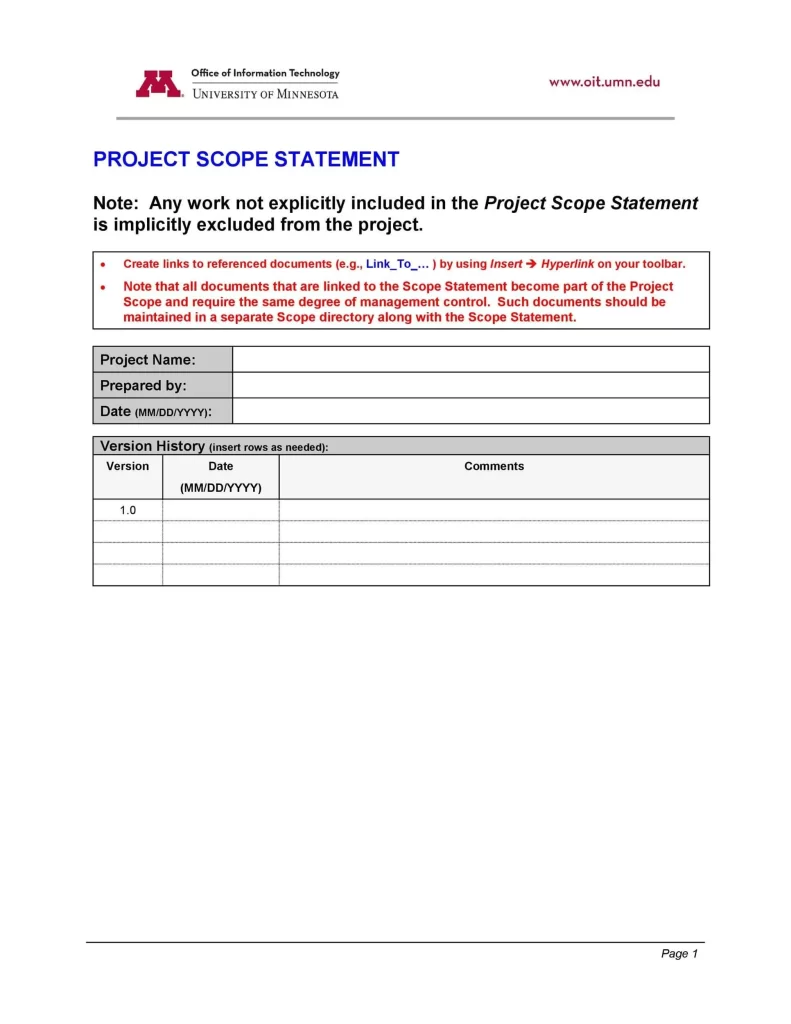
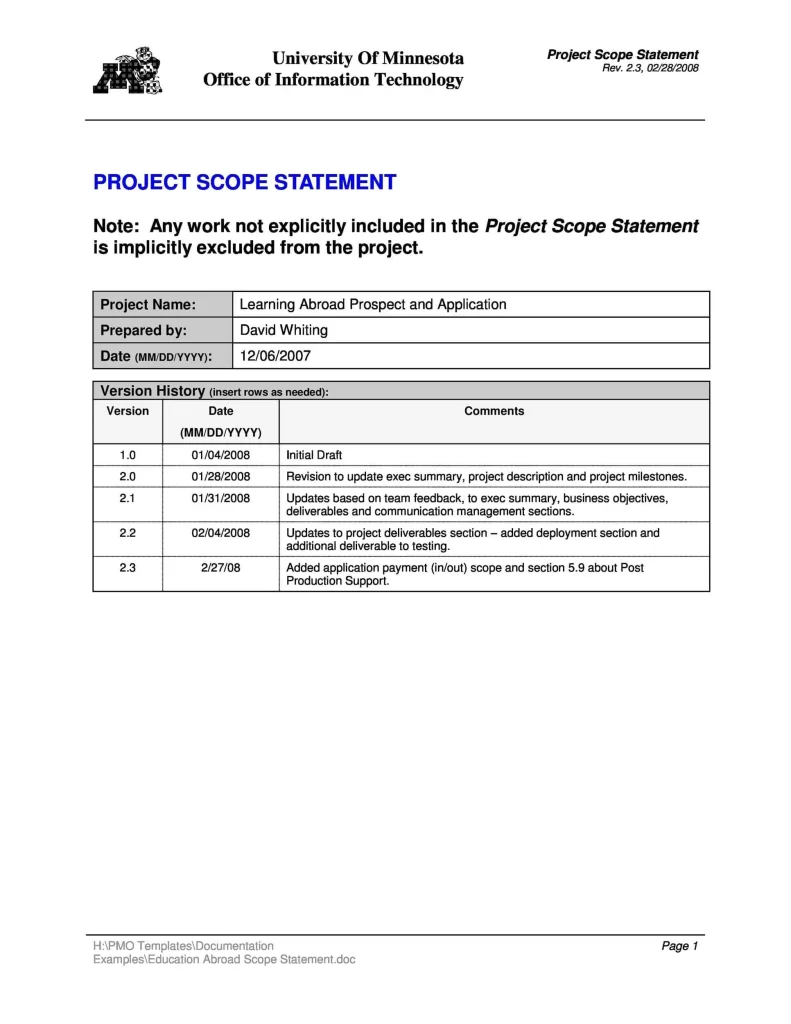
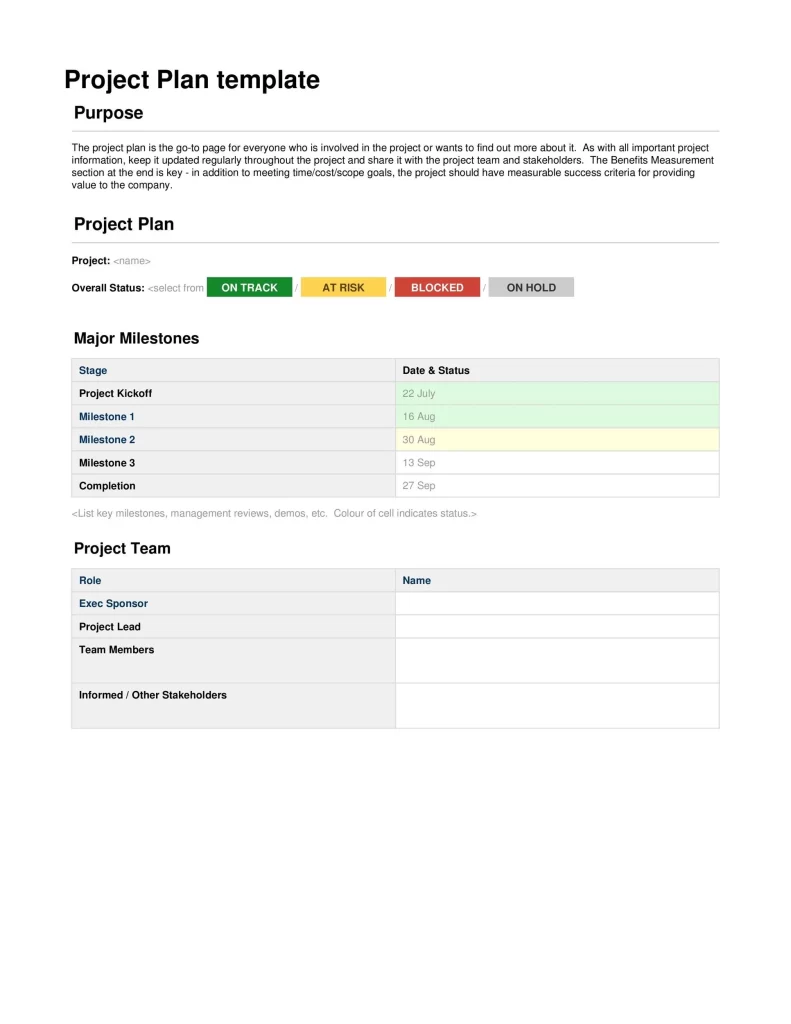
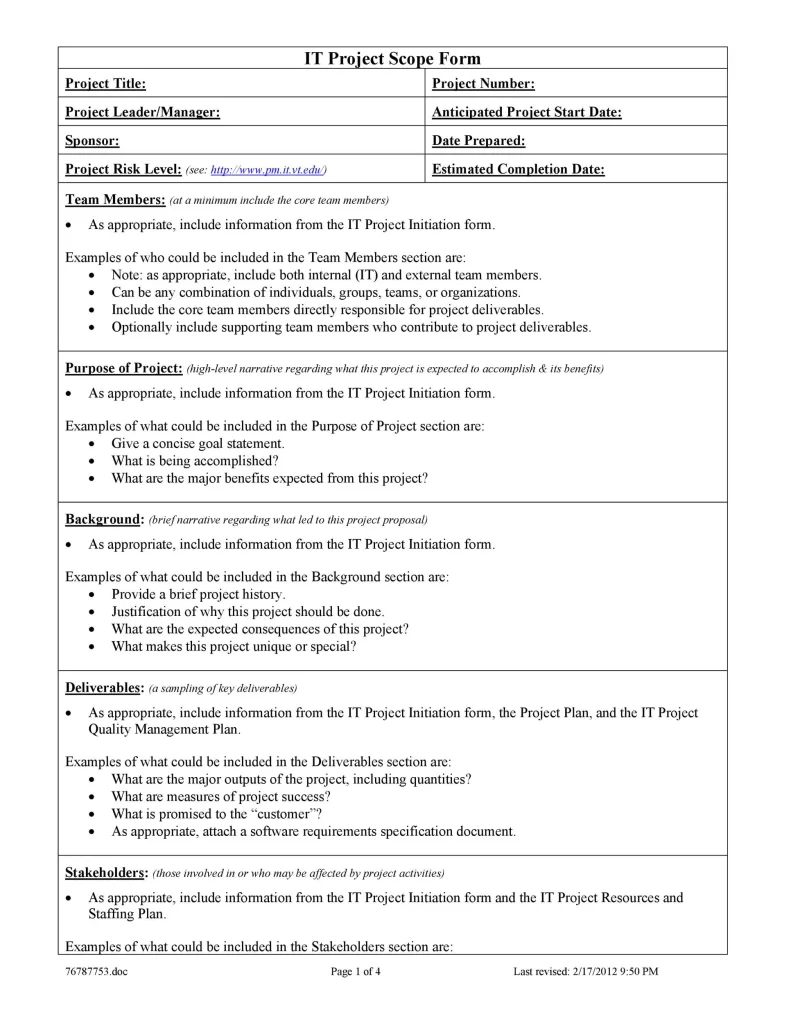
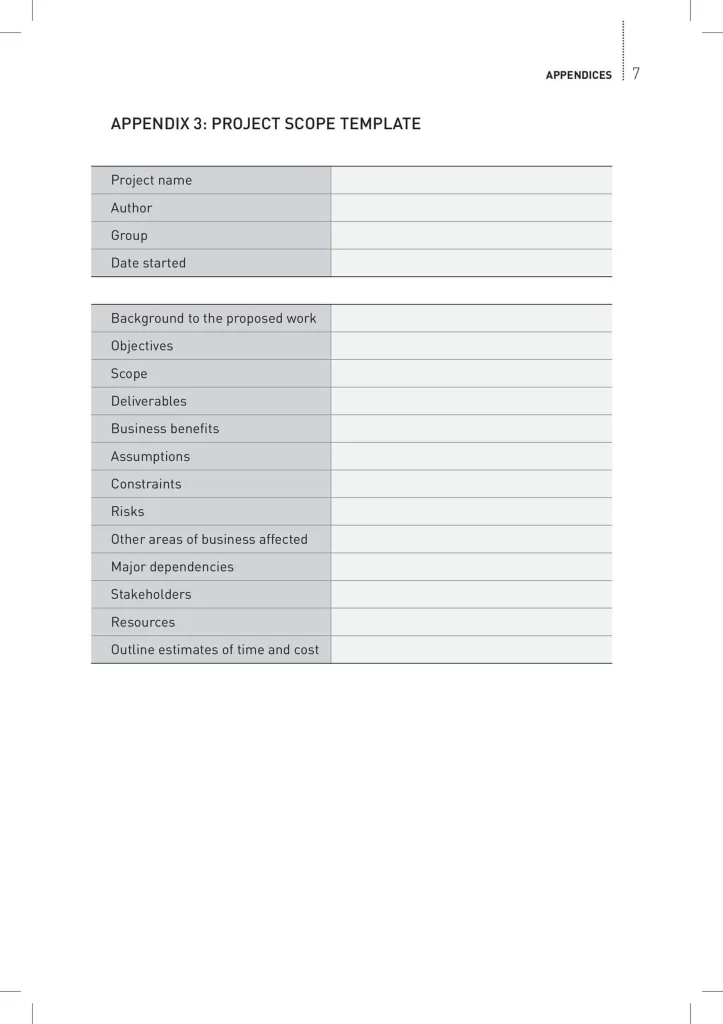
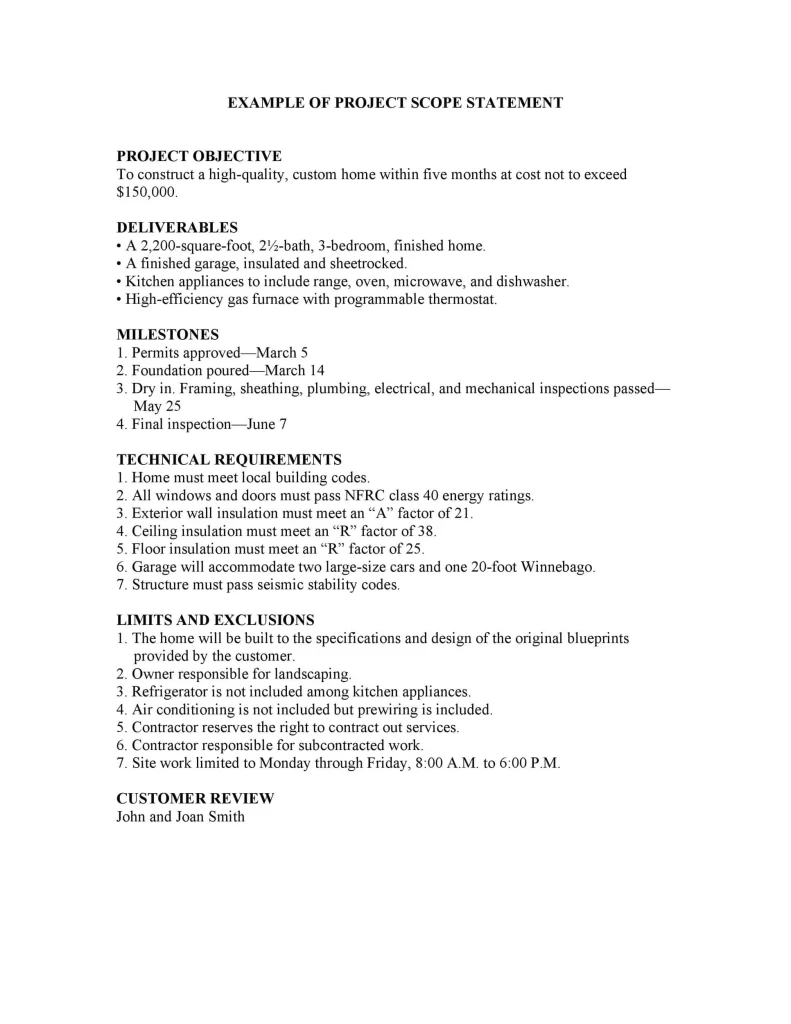
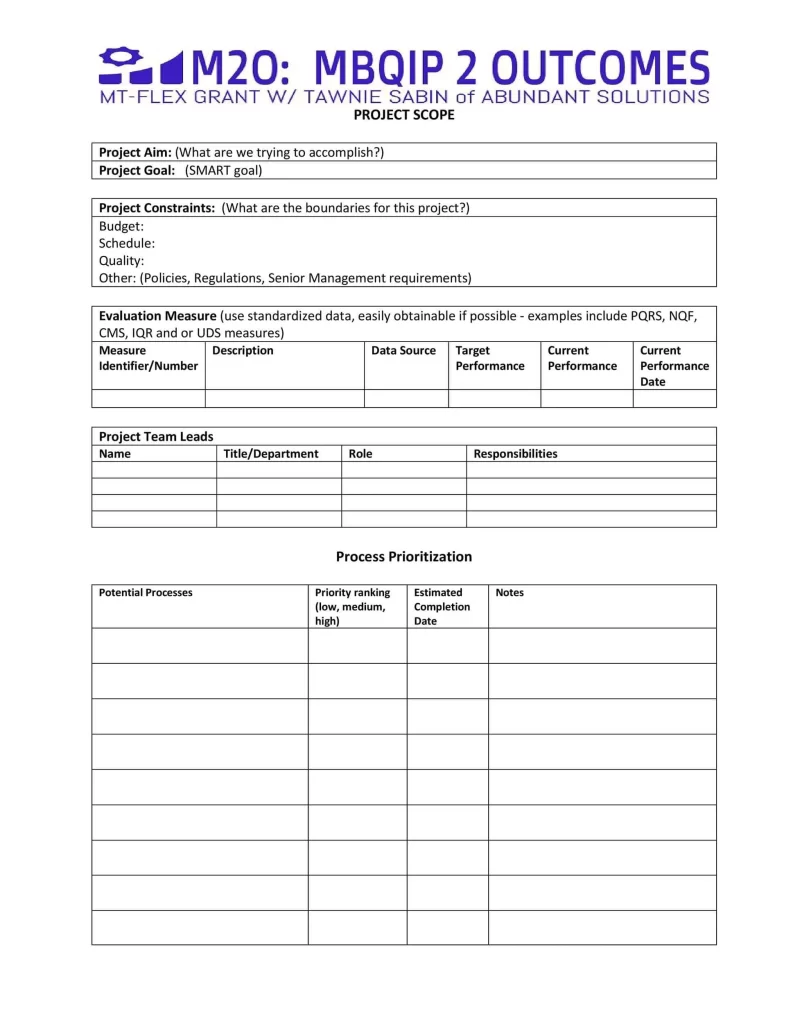
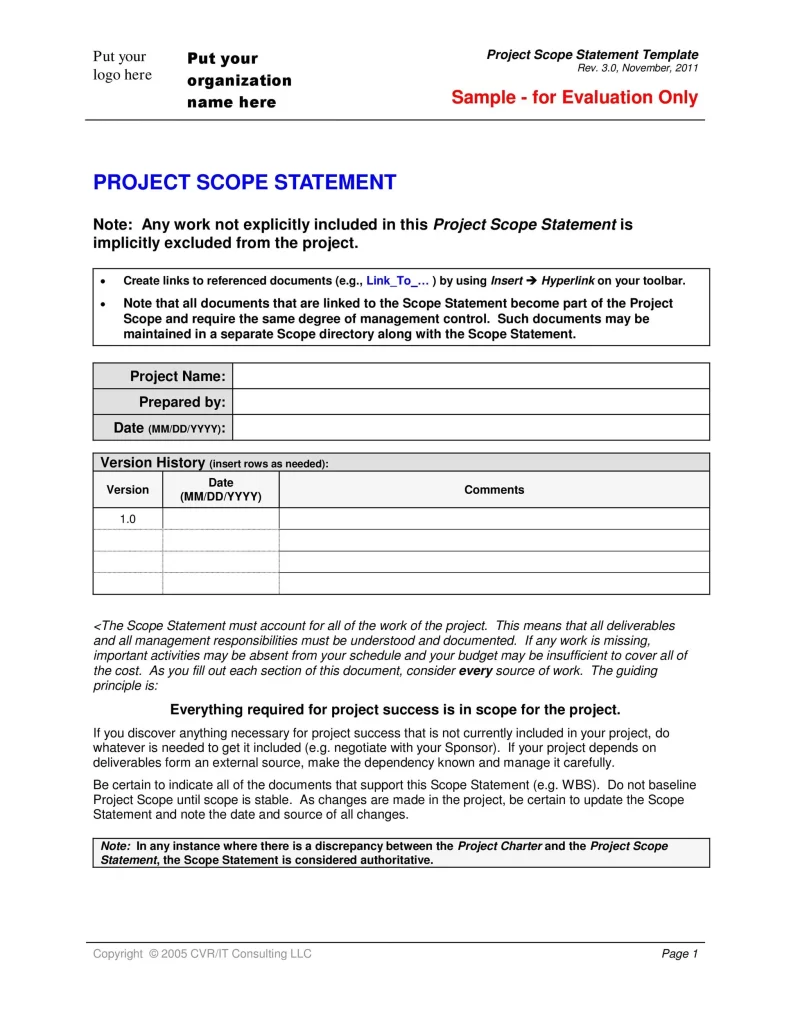
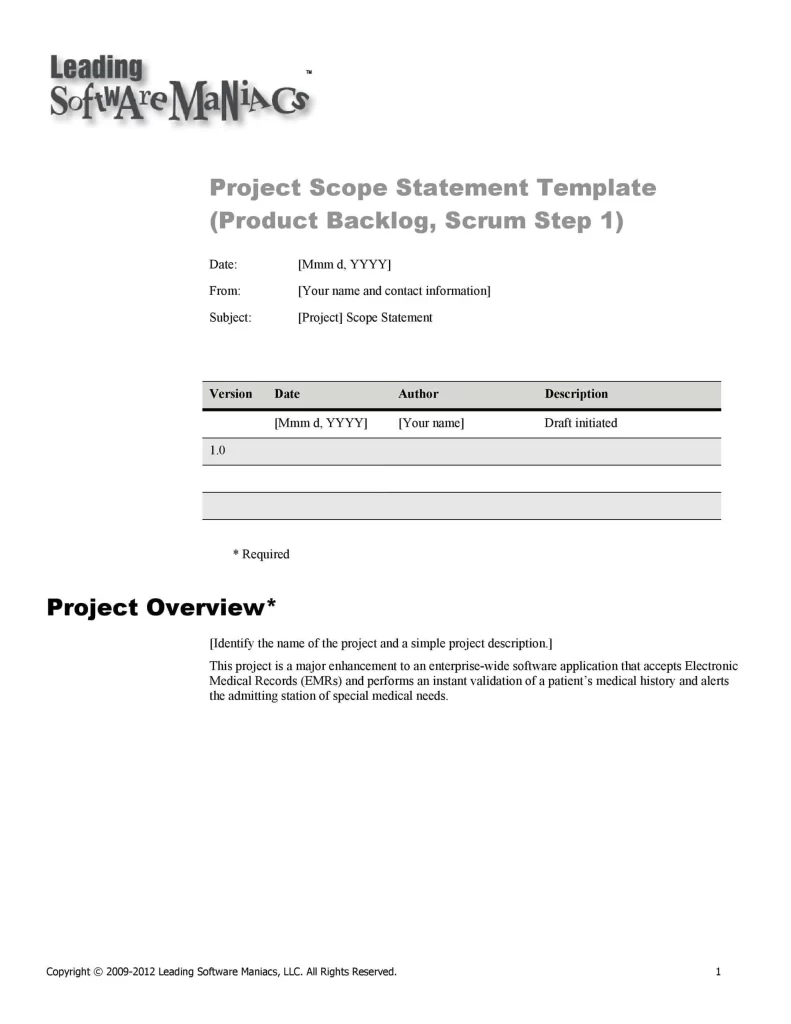
Common Mistakes in Writing a Project Scope Statement
Drafting a Project Scope Statement is a fundamental step in the project management. However, even experienced professionals can sometimes make errors. Recognizing these common mistakes can help avoid them, ensuring a more robust and effective scope statement. Here are some of the most frequent pitfalls:
- Vague Language:
Using clear or generic terms can lead to understanding. A good scope statement should be specific and leave no room for ambiguity.
Example: Instead of writing “improve website functionality,” specify what functionalities will be enhanced or added.
- Skipping Stakeholder Consultation:
Failure to involve all relevant stakeholders during the drafting process can result in missing vital information or misaligned objectives.
- Overlooking Exclusions:
While defining what the project will cover is essential, it’s equally crucial to outline what it won’t. Please detail the exclusions to avoid scope creep.
- Not Addressing Assumptions:
Every project has underlying assumptions. Not listing these can lead to unmet expectations and unforeseen challenges.
- Ignoring Constraints:
It is important to outline the project’s limitations, whether they’re budgetary, time-related, or resource-based, to avoid unrealistic expectations and planning mishaps.
- Not Being Measurable:
If the deliverables and objectives are quantifiable, it becomes easier to gauge progress and determine success.
Example: Instead of “increase website traffic,” specify “increase website traffic by 30% over the next six months.”
- Overcomplicating the Document:
While detail is crucial, an overly complex scope statement can become unwieldy and difficult for all stakeholders to understand.
- Not Reviewing and Updating:
Assuming the scope statement is static can be a mistake. As a project evolves, the scope statement might need adjustments to reflect the project’s current direction.
- Failing to Address Risks:
Identifying potential risks and challenges can ensure the team is prepared for obstacles, leading to delays and increased costs.
- Skipping the Approval Process:
A scope statement is only complete once it’s been reviewed and approved by the necessary stakeholders. Failing to get this sign-off can lead to disputes later on.
- Neglecting to Consider Project Closure:
Every project has an endpoint. Defining what constitutes the project’s completion can clarify when it has achieved its objectives.
FAQs
What is a Project Scope Statement?
It clearly describes what a project will and won’t do. Think of it as a roadmap for your project.
How is it different from a Project Plan?
It tells you “what” the project is about. A Project Plan tells you “how” you’ll do it, like the steps you’ll take and when things will happen.
Can the Project Scope Statement change?
Yes, sometimes things change. But, if they do, everyone should talk about it and agree. Then, write down the changes so everyone knows.
How detailed should the Project Scope Statement be?
It should be clear enough so everyone knows what’s happening. But it doesn’t need every tiny detail. It’s like a map, not a full book.
What if we face a problem not listed in the ‘risks’ section?
That can happen. If it does, the team should discuss it, find a solution, and update the statement.
Do all projects need a Project Scope Statement?
Most big projects should have one. For very small projects, you only need a partial statement. But it’s always good to write down what you plan to do.
How often should we look at our Project Scope Statement?
It’s good to look at it often, especially when making big decisions. It helps remind everyone what the project is about.
Conclusion
Good project scope statement examples are like a guidebook for the project. It tells everyone the steps to take and the things to make. It helps make sure the project turns out great!
In the exciting adventure of making projects, the project scope is like the captain of a ship. It helps guide the way, making sure the ship sails smoothly to its destination.

The content creator team at calipsotree.com is dedicated to making topics accessible to everyone, with over 9 years of experience in writing and breaking down complex concepts into easy-to-understand articles that answer readers’ financial questions.








